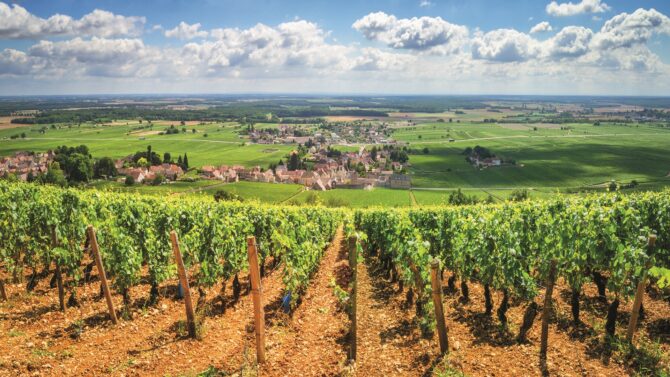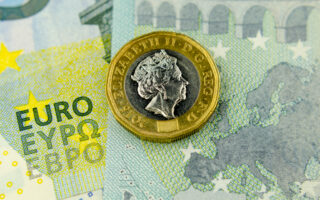French Property Location Guide: Burgundy

Fine food and wine, a fascinating history, architectural splendour and affordable homes put Burgundy firmly on the property map, says Joanna Leggett…
Rich in history, rich in food and gloriously blessed with sublime wines, Burgundy – at least to many from the ‘other side’ of the Channel – remains for the most part relatively undiscovered, unlike some of its more famous vintages.
To the southeast of Paris, Burgundy is a large region bordered by the Loire, Berry and Auvergne to the west and Franche-Comté to the east. For many, its treasures are unknown – all the better then perhaps to find an undiscovered gem in this lush part of what seems to be almost undiscovered France.
Let’s start with the land-le terroir – which plays such an important role in both the cuisine of Burgundy and its world-famous wines. Burgundians may be forgiven for bias, however, it’s hard to disagree when they wax lyrical about their gorgeous countryside – its rolling green hills are dotted with fields (many growing mustard) and ancient villages. The glorious architectural heritage of its medieval towns and villages – and its beautiful capital, Dijon – include gems from the Renaissance, Middle Ages and, like much of France, also owe something to Gallo-Roman and Celtic antiquity.
Hilltop villages boast picturesque châteaux with pepperpot-topped towers. The village of Châteauneuf, for instance, has a 12th-century castle that later became the elegant Renaissance dwelling of the seneschal to the Duke of Burgundy. Lovely turreted and ivy-covered houses built from the 14th to 16th centuries by rich merchants remain to tempt your imagination. Southeast of Auxerre, fortified Cravant has retained its medieval charm; narrow streets wind up the hill past shops, bars and restaurants towards its Renaissance church – offering nourishment for body and soul. Perhaps there’s time for a dish of coq au vin, a regional delicacy, to encourage your pilgrimage!
Burgundy has, of course, an amazing heritage of fine, yet hearty, cuisine. The thought of boeuf Bourguignon at this time of year – steaming hot, rich and unctuous made from local beef, rich lardons and good Burgundian wine – is making my mouth water as I write these words. Indeed, this is one of France’s best-known regions for wine and food – many Michelin- starred restaurants are found here, while, at the same time, there are many small brasseries and cafés offering more purse- friendly menus, a simple plat du jour that will live in your memory for a long time.
RICH HERITAGE
With its strategic position between northern and southern France, Burgundy’s architecture and history is fascinating for anyone who, like me, loves French buildings and the way styles evolve and change between regions. Reflecting this dichotomy of bridging the north/south divide, roofs here range from grey slate in the north to the redder clay pantiles that herald warmer southern climes, especially around Mâcon.
Most distinctive of all though is the Burgundian style itself – flamboyant and Gothic, it echoes the importance of this region in the Middle Ages when the Dukes of Burgundy were definitely the powers behind the throne. Look upwards in Dijon and at the châteaux and churches that dot the vineyards of the famed Côte d’Or as you travel on towards Beaune where roofs are tiled in white, yellow and blue, as well as the ubiquitous red in complicated geometric patterns – woe betide any ancient roofer who didn’t slavishly follow the pattern decreed, I’d say! Flamboyant and fantastic, they lift the plainest building into a fantasy.
The local history is, of course, complicated. It’s said Burgundians were originally a Germanic race that crossed the Rhine, establishing a kingdom covering central France, with borders stretching from Switzerland to Italy. Naturally, war and conquest followed, it became a Duchy and, during the Hundred Years’ War, the French king gave it to his son Philip the Bold – a name to conjure with!
The Dukes of Burgundy went on to create an empire rather than a duchy, stretching to the North Sea; ‘collected’ mainly through advantageous marriages, it even outshone the French court. In fact, in Belgium and the Netherlands a ‘Burgundian lifestyle’ is still used to describe enjoyment of life, good food, luxury and general extravagance.
A dynasty of Philips followed. Such was their position that they had a more than dominant role in French and European politics. It was during the rule of Philip III in the 15th century, that the Burgundian state was most powerful. Known as ‘Philip the Good’, he was renowned for his administrative reforms and patronage of Flemish artists and composers such as Van Eyck.
He played England off against France and vice versa, swapping alliances in attempts to further his powerbase. Joan of Arc fell victim to this as when his soldiers captured her, Philip sold her to the British and the rest is, of course, history. Perhaps he was not quite as ‘good’ as it might at first have appeared.
But I digress. Time to pursue a far more pleasurable topic – the glorious wines of Burgundy – and where better to start than with the dry reds made from pinot noir grapes and white wine made from chardonnay. I’ve said it before – so many wines, so little time…
GLORIOUS GASTRONOMY
The Côte d’Or (golden hillside) between Dijon and Beaune is the ideal terrain, facing the morning sun. Soil here is protected from cold and frosts by the hills, and it’s also enriched by the natural water courses that wash along minerals as they tumble down the slopes. No one knows who started planting vines here, however, the monks were cultivating Chambertin grapes by the 7th century, the Cistercians developed the genesis of Clos de Vougeot in the 12th century, and so on – the whole region has become renowned for the quality of its wine. South of Beaune are the Chalonnais and Maconnais wines, Chablis from around Auxerre is famed, and don’t forget to sample local wines, such as those from Tannay and Vézelay.
MUSTARD CAPITAL
The region’s capital, Dijon, is filled with beautiful historic buildings – added to which there’s the lure of restaurants serving fantastic food washed down with majestic wine. Naturally, some of these will be enhanced by the local Dijon mustard – pork cutlets poached in a delicious cream and mustard sauce anyone? Cobbled streets, grand squares, half-timbered houses and narrow alleyways are lined with medieval buildings. The huge palace, once belonging to the Dukes of Burgundy, which dominates the Place de la Libération, is quite exquisite and now houses the town hall. The Palais des Ducs is also home to the Museum of Fine Arts which, like all public museums in the city, is free to enter.
In Dijon there’s also a gastronomic village brimming with the very best of cuisine and even a chapel dedicated to the vineyards of the region – what better place to pray for a bountiful harvest? In fact, Burgundy has a higher number of AOC (appellations) than any other and is regarded as one of the most terroir-conscious of all French wine regions. Its historical importance led to its sites being awarded Unesco World Heritage status.
Perhaps best of all is its accessibility, with the TGV from Paris to Dijon taking just over an hour and a half. And yet property here remains affordable as well as charming. Balancing a tranquil lifestyle in pretty villages and towns, fantastic food, wine, history, architecture and culture – Burgundy really offers a snapshot of the very best of French lifestyles..
Joanna Leggett is the Marketing Director at Leggett Immobilier, Tel: 08700 115151 (UK) 0033 (0)5 53 60 84 88 (INT)
Looking for more like this?
Every issue of French Property News delivers in-depth regional buying guides, sound and trusted advice from leading experts, inspirational real life stories, renovation tales and lots of lovely properties to browse.
Lead photo credit : Vineyards of Burgundy, © SHUTTERSTOCK
Share to: Facebook Twitter LinkedIn Email
Leave a reply
Your email address will not be published. Required fields are marked *




